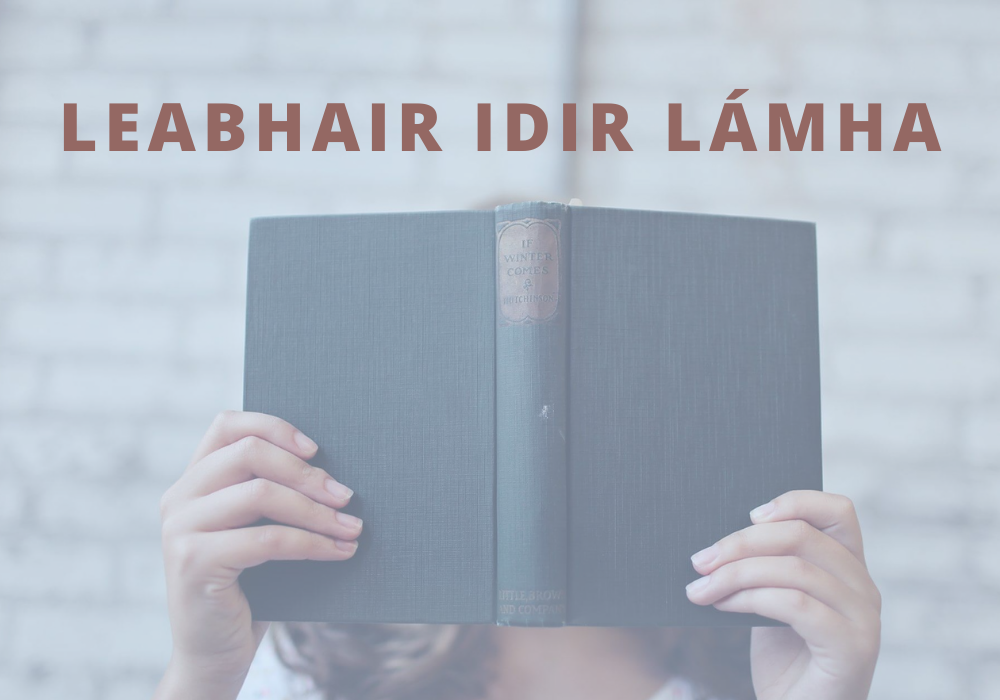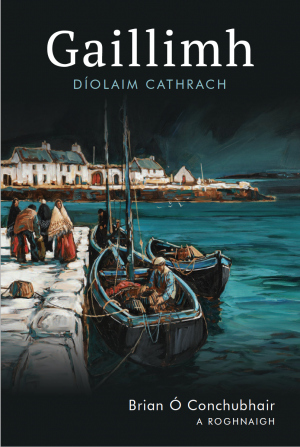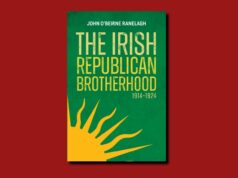
Leabhar idir lámha
Gaillimh: Díolam Cathrach
by Brian Ó Conchubhair a roghnaigh | Cló Iar-Chonnacht | hb | 435pp | €25 | 978178442071
Review by Cathal Póirtéir
Galway’s year as European Capital of Culture in 2020 didn’t work out the way anyone wanted it. Internal organisational problems and staff changes had been problematic enough but severe weather saw the grand opening blown off course and before the organisation could save the year Covid-19 arrived with restrictions that saw some excellent artistic plans sink under the first and second waves of the pandemic.
One of the survivors is Gaillimh: díolaim cathrach, a wonderful compendium of writing about Galway in Irish. Brian Ó Conchubhair’s choices of prose and poetry makes for an impressive and well-presented selection. Past giants of Irish-language prose writing are featured: Pádraig Ó Conaire, Máirtín Ó Cadhain, Liam Ó Flaithearta, Breandán Ó hEithir, Dónall Mac Amhlaigh, Pádhraic Óg Ó Conaire, Tomás Bairéad and Joe Steve Ó Neachtain, for example. Contemporary prose masters from the county are also featured in this up-to-date selection, with Micheál Ó Conghaile and Darach Ó Scolaí, Galway publishing stalwarts in their own rights, as well as work by Tina Nic Enrí. There are extracts from works by non-Galwegians, Bláithín Nic Chnáimhín and Caitlín Ní Thallamhain, that had escaped my attention until now.
The editor has included writers not native to Galway but who have settled there or spend an extended period there and who have written about the city. Barna-based Kerryman Pádraig Ó Cíobháin is here to lead us deeper into our rich storytelling tradition, as is Dutch-born, Brazil-based Alex Hijmans who studied Irish in UCG and later ran an Irish-language cafe in the city. Rath Cairn resident Liam Mac Cóil set his historical adventure novel An Litir in Galway before taking his hero overseas in the following volumes and that rightly earned him his place in the collection.
Undoubtedly, complete short stories and poems are more satisfying to read than short excerpts from longer works but, all in all, here is ample proof that Galway has and continues to inspire notable literature from native scribes and visitors alike.
About 30 poets have their work featured here, some of them Galway natives, others who have passed through, studied or settled down there. It’s an excellent and varied selection featuring the towering presence of Máirtín Ó Direáin and multiple selections from the long-established Seán Ó Leocháin, Seán Ó Curraoin, S.E. Ó Cearbhaill, M.F. Ó Conchúir, Jackie Mac Donncha and Joe Steve Ó Neachtáin. There’s also a selection of women’s voices, better represented in poetry than in prose: Áine Durkin, Máire Holmes, Rita Kelly, Dolores Stewart, Celia de Freine, Pauline Nic Chonaonaigh, an tSiúir Finnín Nic Choncheanainn, Caitríona Ní Chleircín, Ailbhe Ní Ghairbhuigh and Dairena Ní Chinnéide. Some of those names we might not immediately associate with Galway but that cultural flow into and through Galway is one of the riches that this compendium reminds us of and allows readers to enjoy poems by Micheál Mac Liammóir, Louis de Paor, Liam Ó Muirthile, Simon Ó Faoláin and Diarmuid Johnson alongside Ruaidhrí Ó Tuathail, Pádhraic Learaí Ó Finneadha and Seosamh Ó Guairim.
Brian Ó Conchubhair prefaces the volume by a general introduction and gives brief individual introductions to each writer and a context for the chosen piece.
All in all it’s a most enjoyable overview and a reminder of who has been writing in Irish about Galway city for the past century or so, never mind the even more extensive richness of Connemara-focused writing. The contribution of Irish-language writers is sometimes overlooked in considering the literary tradition of Irish cities but Gaillimh: díolam cathrach ensures that in any inclusive reading of Galway city’s literary legacy should include writers who choose to work in Irish, as well as English.
A compendium like this is designed to be dipped into now and again rather than read from cover to cover, although you can do that too. It’s a substantial, solid and attractive volume, in appearance as well as in content, and deserves to be returned to with pleasure again and again.
***
Cathal Póirtéir is a writer and broadcaster who has published several books and CDs on Irish folklore, social history and literature in Irish.












